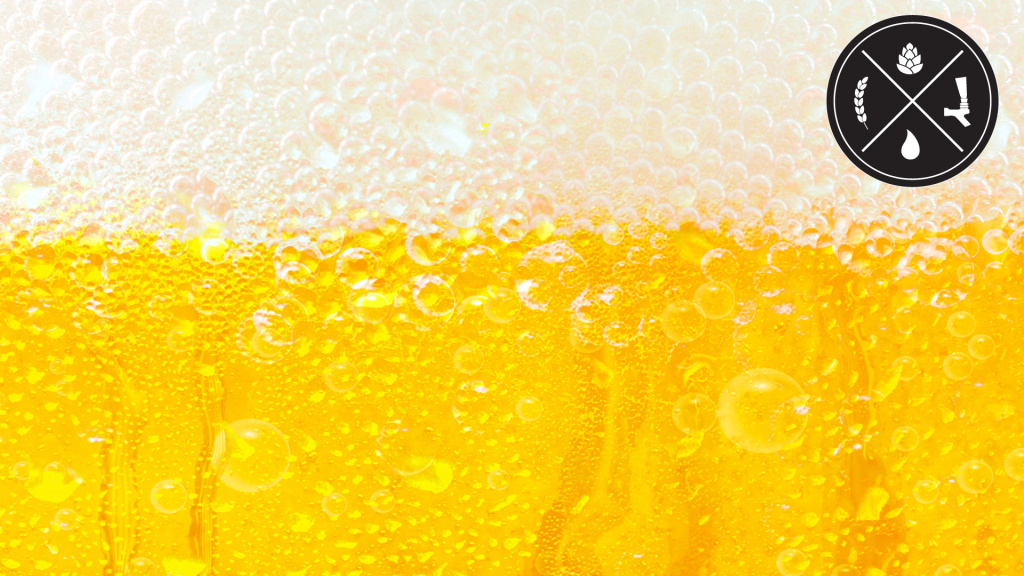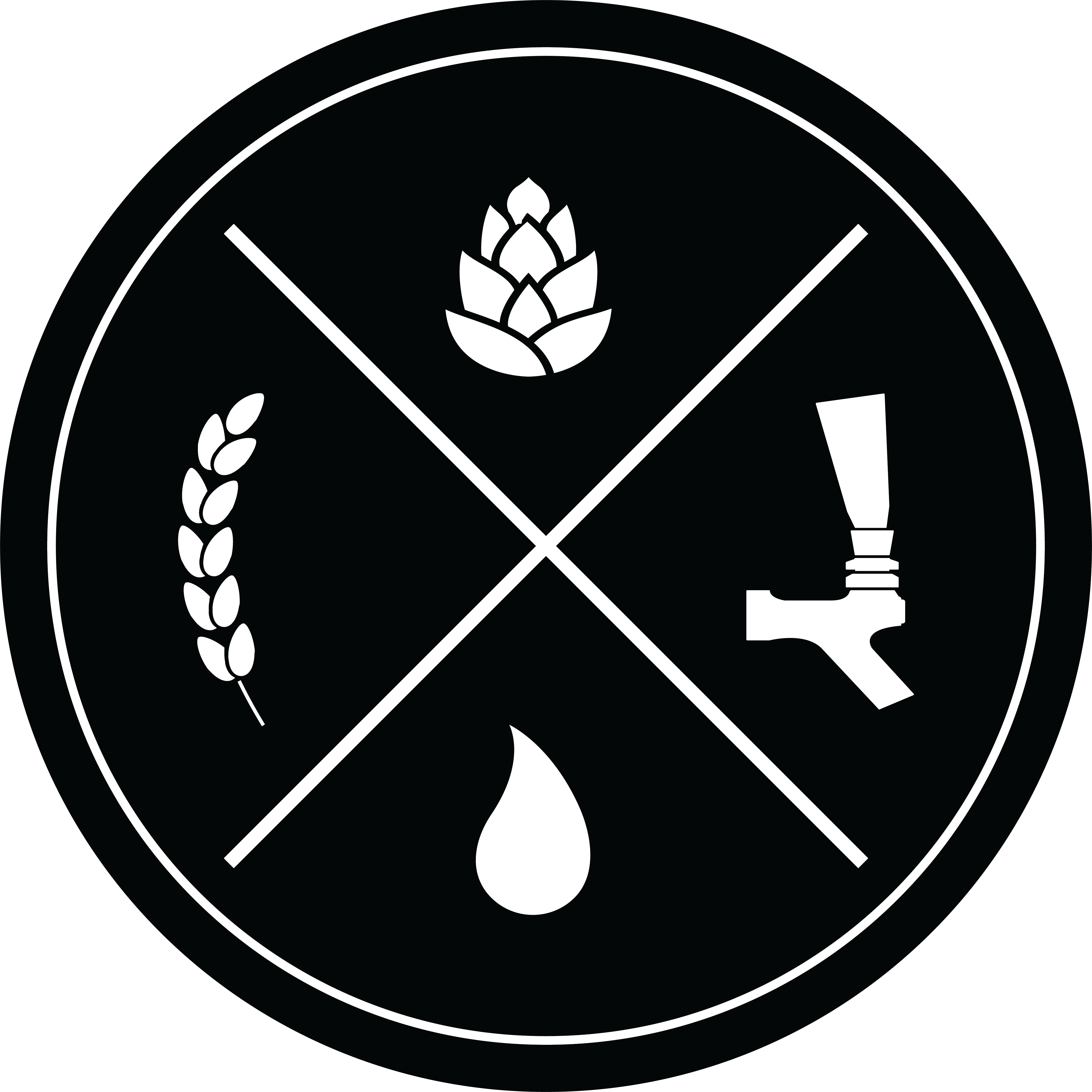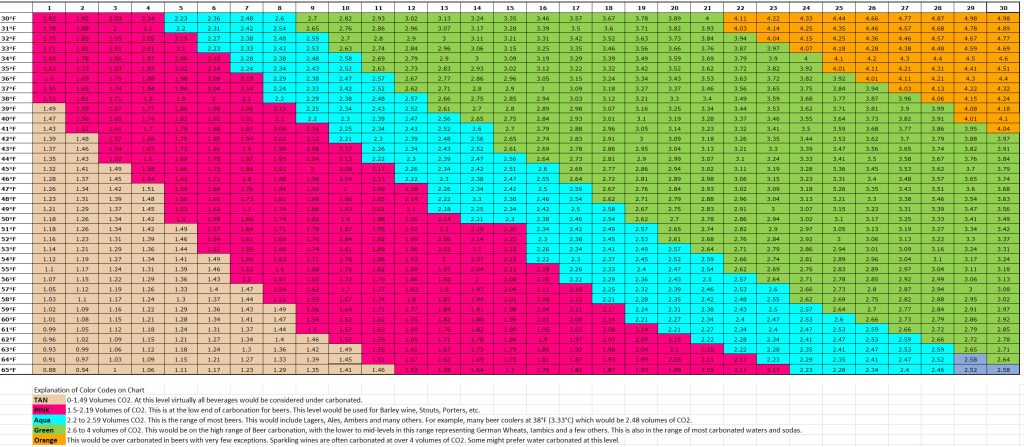
As brewers, we all enjoy making beer and then tasting the fruits of our labors. When you pour a glass of beer, one of the first things you’ll notice is the level of carbonation. Because of the fermentation process itself, where sugars are converted into carbon dioxide (CO2) and ethanol, beer naturally has a level of carbonation when it comes out of the fermenter. The brewer will often then add additional fermentable sugars to the beer when packaging, or force carbonate with CO2 so that there is more carbonation in the final product.
Carbonation is a large part of the beer drinker’s experience. While carbonation itself isn’t exactly a flavor, it definitely influences the perception of the aroma and flavor, as well as the mouthfeel. An undercarbonated beer will seem a bit lifeless, dull and without much aroma. The bubbles in the beer should rise from the bottom of the glass to the top forming the head and also bring the aroma of malt and hops to the drinker’s nose. The fine bubbles are a large part of the mouthfeel and impact the flavors on the palate as well. From a relatively uncarbonated real ale in a cask to a near champagne-like carbonation of a brut IPA or German weizen, the level of carbonation impacts the drinker’s total experience with that beer.
The style being made generally dictates how much carbonation should be in a particular beer. A cask conditioned real ale has a low level of carbonation as it is often gravity fed or pumped by a beer engine into a glass. Although this is not as common today in the US, at one time it was the primary way to serve beer, particularly in the UK. This lower carbonation can enhance the complexity of the beer, bringing more notice to the roastiness of a stout or the gentle hopping of a mild ale. These ales are usually served a bit warmer than lagers as well so that the flavors are more prominent to the drinker. As a contrast, a German weizen will be exceedingly bubbly with a higher carbonation level and served colder. This higher level will allow the head to “float” on top of the beer, creating the distinctive white foam, as well as provide a bit of a carbonic acid bite to the flavor due to this higher carb level. In between these two style examples, other styles tend to be somewhat in the middle.
Carbonation is not just limited to beer of course. Champagne is well known to be very highly carbonated, complete with popping corks and very thick bottles. Wine, soda, kombucha, seltzer, hard cider, and even mead are enjoyed in carbonated versions. Soda and seltzer tend to be more highly carbonated than beer, while cider can be still, pettilant (slightly effervescent), or sparkling (highly carbonated). Kombucha also can be still or carbonated depending on the preference of the consumer. A champagne-like mead can be excellent.
The level of carbonation in a kegged beverage is determined by two factors- the pressure of CO2 forced into it and temperature. Cold liquids will absorb and hold CO2 more readily than a warmer liquid. Because of this, a liquid at a warmer temperature will require more pressure on your gauge than a colder one. In other words, the beer’s carbonation level is determined both by the temperature and the pressure applied within the keg.
The carbonation measurement of a beverage is described in volumes of CO2, as in “2.5 volumes in an American amber”. A volume here is the space that the CO2 would take up at a standard temperature of 32F and at one atmosphere of pressure if removed from the beer. In other words, it’s the amount of c02 dissolved in your beer relative to your beer volume. So in our example of an American amber at 2.5 volumes of CO2, that means that for every 1 measure of liquid there is 2.5 of that measure of c02 dissolved in that liquid.
A finished beer just out of the fermenter may have 1.1-1.7 volumes of residual CO2 just as a product of the fermentation process. To increase that level to the desired volume of c02, you can refer to the carbonation chart. The chart has an X,Y format so that you can see the temperature on the left and the number of psi on the regulator at the top of the chart. Where those intersect is the resulting volume of CO2. For example, my kegerator is at 40 degrees and I have an IPA that I would like to have at 2.47 volumes of CO2. That means I would set my pressure on my regulator to 12 psi. The aqua area of the chart is generally where most of the beers would range, with noted exceptions at the bottom of the chart.
Sparkling water on tap is becoming very popular. Depending on your preference, the water can be at a slightly sparkling level or much more highly carbed to a soda level. Normally, the slightly effervescent setting would be around 3 volumes of CO2, while a very highly carbed setting would be more like 4-5 volumes of CO2. The same is true with cider or kombucha with similar volumes of CO2. Soda tends to be more highly carbonated, as much as 4 volumes of c02 is usual. Since these other beverages like seltzer and cider would be according to personal preference, you may want to experiment with the perfect amount of carbonation for your palate.
CLICK HERE for a full-screen printable version
Become a Patron! Reminder that this site is ultimately made possible because of YOUR support. Consider becoming a member of our TRUB CLUB via our Patreon page and receive perks such as merch, exclusive group access and content, recipes, and some tiers even get monthly recipe kits mailed to you! https://www.patreon.com/HomebrewHappyHour


